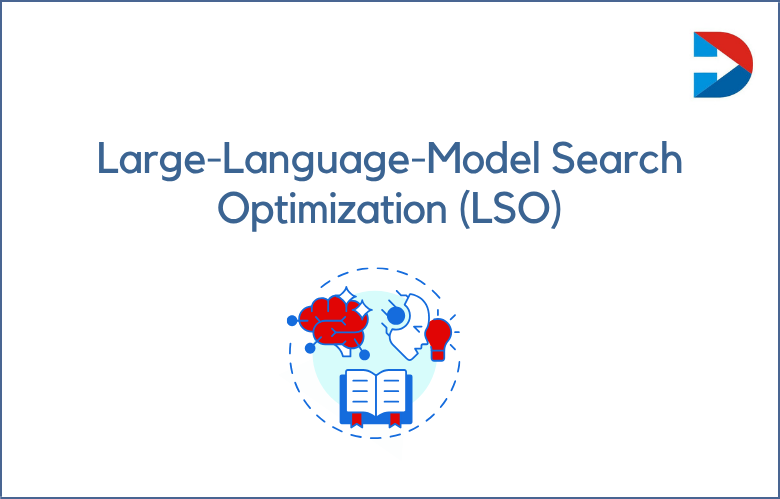
Programmatic advertising has transformed how businesses approach traditional television, radio, and print advertising methods.
Today, programmatic advertising has become the go-to solution for businesses looking to reach their target audience.
However, many people still need to understand programmatic advertising and how it works.
We will dive deep into the topic of programmatic advertising and talk about its benefits, limitations, and everything in between.
What is Programmatic Advertising?
Programmatic advertising is an automated process of buying and selling ad space through ad exchanges that apply algorithms to place ads on relevant web pages.
It uses real-time bidding technology, enabling advertisers to bid on an opportunity to display their ads to their target audience during any online browsing session.
This is done through an ad exchange, an online platform that connects advertisers to publishers, hoping to make the buying and selling of ad space more efficient.
Programmatic advertising is desirable as it allows advertisers to reach out to their target audience at the right time and on a suitable device.
It also ensures an ad is seen by an engaged audience at a reasonable price, significantly reducing the unnecessary expense traditional advertising incurs.
How does Programmatic Advertising work?
Programmatic advertising relies on machine learning algorithms and real-time bidding technology to automate ad buying and placement.
The process starts with a demand-side platform (DSP) that allows advertisers to set their budget, target audience, ad format, and other campaign parameters.
The DSP then uses data from ad exchanges, ad networks, and other sources to identify potential ad inventory that matches the advertiser’s criteria.
Once the DSP finds the proper ad inventory, it sends a bid request to the supply-side platform (SSP) that manages the ad space on publishers’ websites or apps.
The SSP then analyzes the bid request and other offers to choose the winning bidder, who can display their ad on the publisher’s website or app.
The whole process happens in real-time, within milliseconds, allowing advertisers to reach their target audience at the right time and place.
A comprehensive overview of Programmatic Advertising
Programmatic Advertising has been a buzzword in the advertising industry for quite some time.
Yet, for many, the term seems to be intimidating and confusing. We will look in-depth at programmatic advertising and what it entails.
After reading this post, we hope you’ll better understand programmatic advertising and how it could benefit your business.
Programmatic advertising is the automated buying and selling digital advertising inventory through real-time bidding (RTB) and algorithms.
This means an advertiser can book an ad space without human intervention, placing an ad within milliseconds of a user’s website visit. Because of its efficiency, programmatic advertising has become increasingly popular in recent years.
Understanding Programmatic Advertising: A Game-changer in the Digital World
Over the past few years, programmatic advertising has been taking over the digital advertising space, revolutionizing how brands interact with potential customers.
But what is programmatic advertising, and how does it work? I will guide you through everything you need about programmatic advertising – from how it works to its many benefits for advertisers.
What are the challenges of Programmatic Advertising?
Lack of transparency
One of the challenges of programmatic advertising is the need for more transparency in the system.
Because programmatic buying is automated, advertisers may not always know where their ads are placed or who sees them.
This lack of transparency can make it challenging to ensure that ads are placed in appropriate environments and reach the intended audience.
Fragmentation
Another challenge of programmatic advertising is fragmentation. Due to many ad exchanges and demand-side platforms (DSPs), the programmatic ecosystem can be quite fragmented.
This fragmentation can make it difficult for advertisers to reach their target audience, as they may need to use multiple platforms.
Ad fraud
Ad fraud is another challenge faced by programmatic advertisers. Ad fraud occurs when an advertiser pays for ad impressions that humans do not see.
This can happen when bots or other automated systems generate fake traffic to a website to inflate ad impressions. Ad fraud can waste an advertiser’s budget and cause them to lose money.
Lack of control
Programmatic advertising can also be challenging for advertisers who want more control over their campaigns.
Because programmatic buying is automated, advertisers may need more control over where their ads are placed or how they are targeted. This lack of control can make it difficult to optimize campaigns and ensure that they are effective.
Complexity
The complexity of programmatic advertising can also be a challenge for advertisers. Programmatic buying involves many moving parts, including ad exchanges, demand-side platforms, supply-side platforms, data providers, and creative agencies.
This complexity can make it difficult for advertisers to understand how the system works and how to optimize their campaigns for maximum effectiveness.
What are the benefits of Programmatic Advertising
One of the main benefits of programmatic advertising is its speed and efficiency.
As it’s all done through automated platforms, advertisers save time and money on manual tasks such as research, bidding analysis, and post-campaign optimization.
Another significant advantage of programmatic advertising is the ability to target an audience in real-time.
This feature allows businesses to optimize their advertising campaigns, depending on the real-time feedback and data the audience provides.
Programmatic advertising reduces the need for extensive human intervention, ensuring ads are displayed to a particular and engaged audience, resulting in a better conversion rate and improved ROI.
Limitations of Programmatic Advertising
Programmatic advertising is expensive due to the advanced technologies, making it inaccessible for small businesses.
Also, even though programmatic advertising enables businesses to reach a broad audience in real-time, it can result in ad fraud, invalid clicks, and false impressions on low-quality websites.
Programmatic advertising highly depends on the data’s accuracy. Your advertising campaign will only succeed if the data needs to be corrected or more accurate.
Making Programmatic Advertising Work for You
One of the most effective ways of making programmatic advertising work is by setting automation and optimization rules to ensure the right audience views the ad.
Also, advertisers should ensure they have solid control over the data, including data collection, analysis, and optimization, to achieve better results.
Building a solid relationship with the publisher is also crucial for a successful advertising campaign, as are defining clear goals, open communication, and reach with all parties.
More Control Over Campaigns
Programmatic advertising gives you more control over your campaigns than traditional methods.
This is because you can choose exactly where your ads will appear and how often they will be shown. You can also set specific budgets for each campaign and track your results in real time so that you can make changes if necessary.
A
ccess to Better Data
Programmatic advertising also gives you access to better data about your campaigns than you would have through traditional methods.
This data can help you understand what is working and what is not and how people respond to your ads. This information can then be used to improve future campaigns.
Conclusion
Programmatic advertising has drastically transformed the way businesses approach traditional ad campaigns. Its ability to reach a highly engaged and specific audience through automated platforms is a game-changer for advertisers everywhere.
While it may not be suitable for everyone, programmatic advertising should be a part of a business’s marketing strategy.
Remember always to take precautionary measures, set goals, take control of your data, and foster good relationships with the publisher and audience. By doing so, you’re sure to see great results from your programmatic advertising campaign.




